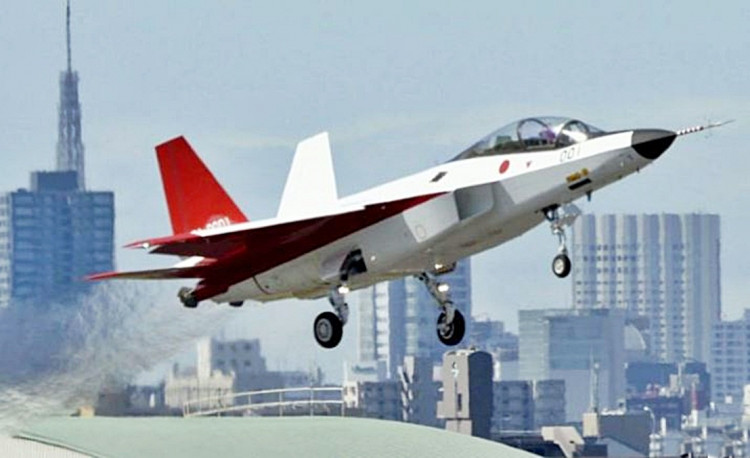Japan will begin manufacturing its first indigenous sixth-generation stealth jet fighter by 2031 under its F-X program, and expects to build 100 of these swift, stealthy and highly maneuverable jets that will be capable of shooting down large numbers of enemy planes.
Because of its huge size, the new F-X jet has earned the nickname the "Godzilla" fighter, in a nod to the popular Japanese science fiction monster. The emphasis on size indicates the F-X will possess very long range and a large payload capacity.
Japan's decision to build this new fighter makes it one of the first countries to commit to building a sixth-generation warplane that will combine stealth with networked warfare and aerial drones. The United States and Australia are also developing future fighters along this line.
The Japanese Ministry of Defense has set aside more than $261 million (28 billion yen) to develop the new F-X. This amount also includes funding to develop armed aerial drones that can work with the new sixth-gen fighter in networked warfare.
The ministry also told members of the Diet (Japan's parliament) that the new fighter jet will replace the aging Mitsubishi F-2 multirole fighter derived from the General Dynamics F-16 Fighting Falcon. The F-2 entered service with the Japan Air Self-Defense Force (JASDF) in 2000. It's manufactured by Mitsubishi Heavy Industries and Lockheed Martin.
The new F-X stealth jet will be a huge twin-engine warplane that will complement the JASDF's fleet of Lockheed Martin F-35 Lightning II stealth jets. The F-35s will begin entering widespread service in the next few years.
The new sixth-generation jet will also have the ability to synchronize missiles fired by aerial drones targeting multiple enemy aircraft. This warfighting concept is called networked shooting or integrated fire control.
The F-X will also use thrust vector control (TVC) or thrust vectoring. This technology refers to the ability of an aircraft to manipulate the direction of the thrust from its engine to control the attitude or angular velocity of the vehicle. In the case of the F-X, TVC will allow this jet to make tighter turns.
The F-X will carry more missiles than the F-35, said Defense Minister Taro Kono. The F-35 can carry only six air-to-air missiles: four internally and two on its wings.
The F-X will be equipped with integrated sensors to improve detection of enemy stealth aircraft such as China's Chengdu J-20 single-seat, twinjet stealth jet.
Among the revolutionary technologies that will equip the F-X will be a self-defense system to counter air-to-air missiles and surface-to-air missiles (SAM). The F-X will be armed with a microwave weapon to disrupt the radio wave signals guiding an incoming missile.
Another new technology will be control of aerial drones. The F-X will be able to control several unmanned combat aerial vehicles (UCAVs) currently being developed under the Combat Support Unmanned Aircraft program. These UCAVs should be ready for deployment by the 2030s.






